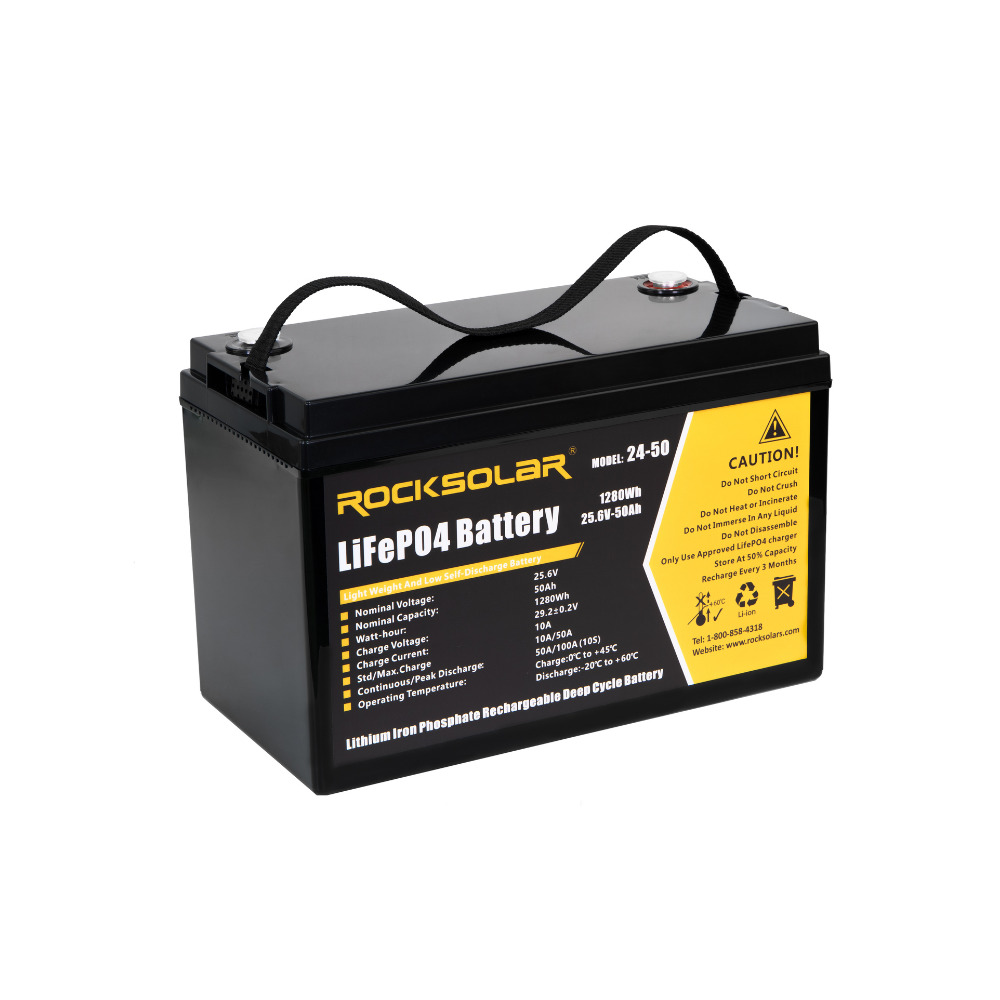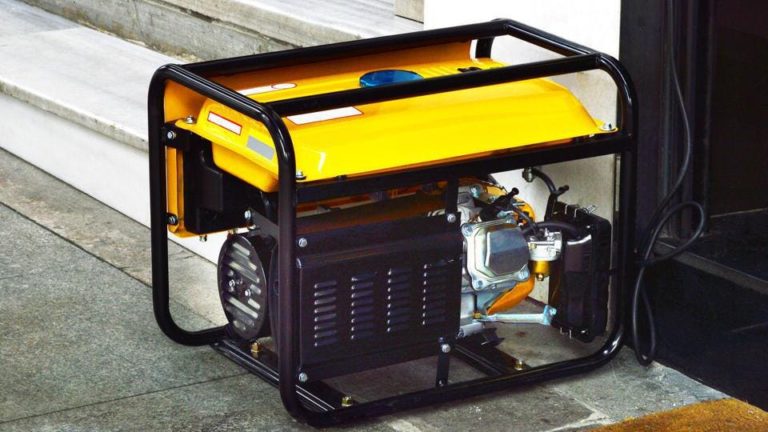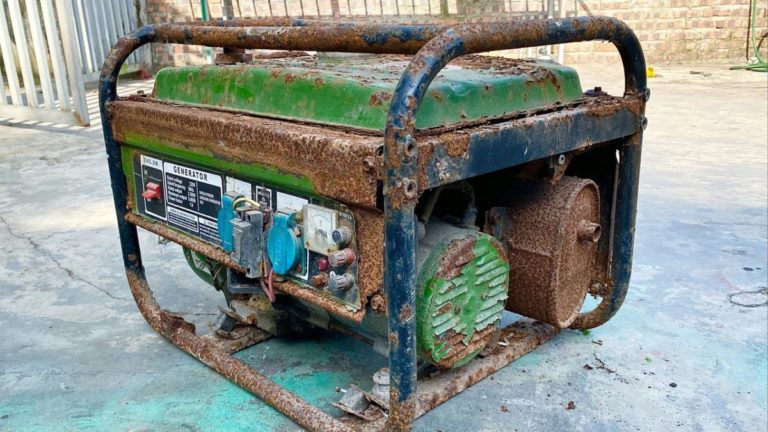Off-grid solar power systems rely heavily on deep cycle batteries to store and supply energy when the sun isn’t shining.
Proper sizing and selection of these batteries is important to ensure a reliable and long-lasting renewable energy system.
We will provide you with actionable information and expert insights on how to choose the right deep cycle batteries for your off-grid application, considering factors such as battery type, capacity, depth of discharge, and more.
Determine your power requirements
Calculate the total wattage of all the devices and appliances you plan to power with your off-grid system. This will help you determine the appropriate battery size and number of batteries needed.
This includes lights, refrigerators, laptops, television, and any other electrical devices you plan to use.
The total wattage will help you determine the appropriate battery size and number of batteries needed for your system.
For example, if you plan to power a 32-inch LED TV that consumes 150 watts, a laptop that consumes 65 watts, and four lights that consume 10 watts each, you’ll need a battery with a minimum capacity of 300 watt-hours (Wh) to power these devices for at least 4 hours.
Moreover, you may need to install multiple batteries in parallel to meet the total wattage demand, depending on the battery’s voltage and capacity.
So, calculating the total wattage is important to determine the appropriate battery size and configuration for your off-grid solar power system.
Consider the battery’s discharge rate
Deep cycle batteries are rated by their discharge rate, which is the amount of power they can provide over a given period of time. Look for a battery with a discharge rate that can meet your power requirements.
Deep cycle batteries are designed to provide a sustained supply of power over a long period of time, making them an essential component in many off-grid energy systems.
When selecting a deep cycle battery, it’s important to consider your power requirements and choose a battery with a discharge rate that can meet them.
The discharge rate of a battery refers to the amount of power it can provide over a given period of time.
The most common measurement of discharge rate is the ampere-hour (Ah) rating, which represents the amount of energy the battery can supply at a given voltage and current over a specific time period.
Look for a battery with a high Ah rating to ensure you have enough power for your needs.
For example, if you need to power a solar-powered water pump for several hours each day, a battery with a high discharge rate would be able to provide the necessary power and keep your system running smoothly.
Deep cycle batteries come in different types, such as lead-acid and lithium-ion, each with its own advantages and disadvantages.
Consider factors such as cost, maintenance requirements, and lifespan when making your selection.
By choosing the right deep cycle battery with the appropriate discharge rate, you can ensure a reliable and efficient power supply for your off-grid energy system.
Select the appropriate battery type
Deep cycle batteries come in three main types
Deep cycle batteries are a important component of many off-grid and renewable energy systems, and they come in three main types: flooded lead acid, gel, and AGM (absorbent glass mat).
Each type has its own advantages and disadvantages, and choosing the right one depends on your specific needs and application.
Flooded lead acid batteries are the most common type and are known for their reliability and cost-effectiveness.
They consist of a plates and a acid solution that must be maintained at the correct level.
However, they require regular maintenance and can be prone to spills and leaks.
Gel batteries, on the other hand, are designed for high-performance applications and have a longer lifespan than flooded lead acid batteries.
They are made with a gel-like substance that contains the electrolyte, eliminating the need for regular maintenance.
However, they are more expensive and have a lower energy density.
AGM (absorbent glass mat) batteries offer a balance between performance and cost.
They use a fiberglass or polyester mesh as the separator, which allows for a higher energy density and a longer lifespan.
They also require less maintenance than flooded lead acid batteries but are more expensive than traditional lead acid batteries.
By understanding the differences between these three main types of deep cycle batteries, you can choose the right one for your specific needs and ensure a reliable and efficient off-grid or renewable energy system.
Consider the battery’s lifespan
Deep cycle batteries have a lifespan of around 5-7 years, depending on the type and how they are maintained. Choose a battery with a long lifespan to ensure your off-grid system remains functional over the long term.
When investing in an off-grid solar power system, it’s essential to consider the lifespan of the deep cycle batteries that store the energy generated by your panels.
Deep cycle batteries have an average lifespan of 5-7 years, depending on the type and maintenance.
To ensure that your system remains functional and reliable over the long term, it’s important to choose a battery with a long lifespan.
One factor that affects the lifespan of deep cycle batteries is the type of battery you choose.
Some battery types, such as lead-acid batteries, have a longer lifespan than others, such as lithium-ion batteries.
Proper maintenance, such as regularly checking and maintaining the battery’s charge and avoiding deep discharges, can significantly extend the lifespan of your batteries.
To maximize the lifespan of your deep cycle batteries, it’s important to choose a high-quality battery that is designed for off-grid solar power systems.
Look for batteries with a proven track record of reliability and a long warranty.
Ensure that your solar power system is sized correctly to meet the energy demands of your home or business, as an oversized system can put additional strain on your batteries and reduce their lifespan.
By investing in high-quality deep cycle batteries and proper maintenance, you can ensure that your off-grid solar power system remains functional and reliable for years to come.
Check the battery’s temperature range
Deep cycle batteries can be sensitive to extreme temperatures. Make sure the battery you choose can operate within the temperature range of your off-grid system.
Deep cycle batteries are sensitive to extreme temperatures, which can affect their performance and lifespan.
High temperatures can cause the battery plates to expand, leading to premature wear and reduced capacity, while low temperatures can slow down the chemical reactions within the battery, making it difficult to start and maintain a charge.
To ensure optimal performance and longevity, it’s essential to choose a deep cycle battery that can operate within the temperature range of your off-grid system.
This means selecting a battery that can withstand the high and low temperatures that your system may be exposed to, based on your location and the specific application.
For example, if you live in a hot and humid climate, you’ll need a battery that can handle high temperatures, while if you live in a cold climate, you’ll need a battery that can withstand low temperatures.
Some deep cycle batteries are designed with temperature compensation features, which can help to maintain optimal performance in extreme temperatures.
When selecting a deep cycle battery for your off-grid system, be sure to consider the temperature range of your system and choose a battery that can handle the conditions in which it will be operating.
Consider the battery’s maintenance requirements
Deep cycle batteries require regular maintenance, such as watering and charging. Choose a battery with low maintenance requirements to ensure you can keep your system running smoothly.
Deep cycle batteries are a important component of any off-grid or renewable energy system, providing the power needed to run your home or business.
However, these batteries require regular maintenance to ensure they continue to perform at their best.
One of the most critical aspects of maintenance is watering, as the battery’s plates can become dry and degrade over time if not properly hydrated.
Charging the battery is essential to maintain its capacity and overall health.
Choosing a battery with low maintenance requirements can save you time and money in the long run, ensuring that your system runs smoothly and efficiently.
For example, some batteries are designed with a maintenance-free label, which means they do not require watering or excessive charging.
These batteries are often more expensive upfront, but the cost savings from reduced maintenance can add up over time.
By choosing a low-maintenance battery, you can enjoy a hassle-free experience and avoid the headaches that come with neglecting your battery’s needs.
Look for a battery with a high capacity
Deep cycle batteries come in a range of capacities. Choose a battery with a high capacity to ensure you have enough power to meet your needs.
When selecting a deep cycle battery, it’s important to consider your power needs and choose a battery with a high capacity to ensure you have enough power to meet your requirements.
Deep cycle batteries come in a range of capacities, and the higher the capacity, the more power the battery can provide.
For example, if you need to power a large RV or a remote cabin, a high-capacity deep cycle battery with a capacity of 1200-1500 watt-hours (Wh) or more would be ideal.
This would provide enough power to run your appliances and lighting for extended periods of time, even in the event of a power outage.
A high-capacity battery would allow you to run your appliances for longer periods before needing to recharge, providing greater convenience and peace of mind.
In contrast, a lower-capacity battery may not provide enough power to meet your needs, leading to frequent recharging and inconvenience.
Therefore, it’s essential to choose a deep cycle battery with a high capacity to ensure you have enough power to meet your needs.
Check the battery’s warranty
Look for a battery with a comprehensive warranty that covers replacement and repair costs. A good warranty can provide peace of mind and protect your investment.
When shopping for a battery, look for one with a comprehensive warranty that covers replacement and repair costs.
A good warranty can provide peace of mind and protect your investment.
A warranty can help mitigate the risk of premature battery failure, providing assurance that your device will continue to function at its best.
A comprehensive warranty should cover not only replacement costs but also repair costs, ensuring that you won’t be left with a dead battery and a hefty repair bill.
Look for warranties that offer a specified number of charge cycles or years of coverage, providing a clear indication of the battery’s expected lifespan.
By investing in a battery with a comprehensive warranty, you can enjoy a longer-lasting and more reliable power source for your device, giving you more value for your money.
Want More? Dive Deeper Here!
Hey there! If you’re the type who loves going down the rabbit hole of information (like we do), you’re in the right spot. We’ve pulled together some cool reads and resources that dive a bit deeper into the stuff we chat about on our site. Whether you’re just killing time or super into the topic, these picks might just be what you’re looking for. Happy reading!
- Redirecting
- (PDF) IEEE Guide for the Selection and Sizing of Batteries for Uninterruptible Power Systems Energy Development and Power Generation Committee of the IEEE Power Engineering Society IEEE Standards Board | Alberto Peñafiel – Academia.edu
- Eastern Illinois University | Official Website | EIU






